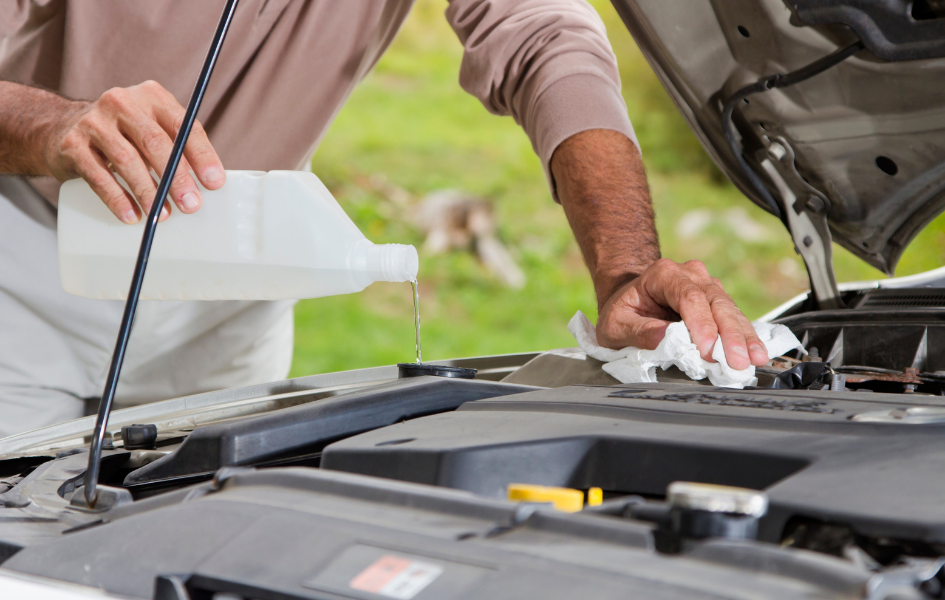
Vehicle Maintenance for the Fall
Fall is here, which means winter is getting closer. The dramatic weather changes around this time of year (in most areas) can affect your vehicle’s performance in many ways, so it’s a great idea to make sure your car is in great shape. Foremost® has gathered a list of fall car maintenance checklist tips to help you look for the right things.
Check your fluids.
One of the most important parts of fall vehicle maintenance is checking your engine oil level, coolant, brake fluid, transmission fluid, and power steering fluid. Be sure you read your owner’s manual to find out the best way to check each of these fluids in your vehicle. You can also find helpful videos online if you’re more of a visual learner. Important tip from experts like the Occupational Safety and Health Administration (OSHA): when checking your coolant, do not remove the cap while the engine is hot. If you do this, the coolant will spray out and it can burn you. Once it’s cooled down, OSHA notes that it will settle, and it will be safe to remove the cap.
Check your windshield wipers.
Depending on where you live, you may get a lot of rain and even snow during the fall. You’ll want to make sure the blades on your windshield wipers are in good condition. A good way to test them is to get in your car when it rains or spray a bit of washer fluid and wipe it off. If you see any streaks, it may be time to get new blades. Additionally, now would be a great time to fill your car up with a washer fluid blend designed for winter, so it won’t freeze when the temperatures drop.
Ensure all your lights work.
As you know, daylight doesn’t last as long in the fall. That means you will need to rely on your vehicle’s lights a lot more. Dim or broken lights won’t serve you well in foggy or stormy weather, especially when it’s dark out, so now is a great time to make sure your lights are working properly.
Inspect your brakes.
Your brakes are important all year round, but maybe even more so in the fall and winter. If you are more liable to encounter slick roads in your area, you’ll want to be sure that you can stop on a dime if necessary. Check to make sure your brake pads and discs aren’t thin or worn out. If you’re not sure, seek help from a professional.
Inspect your tires.
Just like your brakes, your tires are very important at all times, but especially in bad weather. If your tires are bald, meaning they have low or no tread, you’ll be at a greater risk of losing control of your vehicle. This is because tires with low tread can’t grip the road as well. If you notice that the tread on your tires is low, consider replacing them.
Stay up-to-date on service needs.
The best way to keep your vehicle in good shape is to have it serviced regularly. The most common service needs are oil changes and tire rotations. Over time, the oil in your car accumulates dirt and debris. The oil will start to gel or sludge If you don’t change it, meaning it becomes solid. If this happens, the oil won’t be able to each all parts of your engine and it will eventually lock up. Therefore, changing your oil is important. If you don’t want to pay someone to do it, check out this guide on how to change your oil yourself. As far as tires, the tires on the front of your car do more work, because these are the tires that stop the car. This causes the tread on the front tires to go down faster than the ones on the back. If you don’t rotate your tires, you’ll end up having to replace the ones in the front much faster.
Test your heat.
If you haven’t used the heat in your car since last winter, you should check it now to make sure it’s working properly. If it’s not, you may need to have your cooling system checked out. There could be an issue with the thermostat, the water pump, or even the heater core.
Wash and wax your vehicle.
We all like for our cars to look good. Unfortunately, the main threat to your vehicle’s outer appearance is fall and winter weather. If you allow the dirt from the rain and snow to stay on your car for too long, it can cause the paint to chip and cause the metal to rust. Washing your car will remove dirt, and waxing it afterwards will create a coating around the vehicle that protects the paint from natural elements.
While following these fall vehicle maintenance tips can help prepare your vehicle for the winter, it may be a good idea to take additional precautions once the temperatures drop.
Blog Credit to Our Partners: Foremost Insurance
